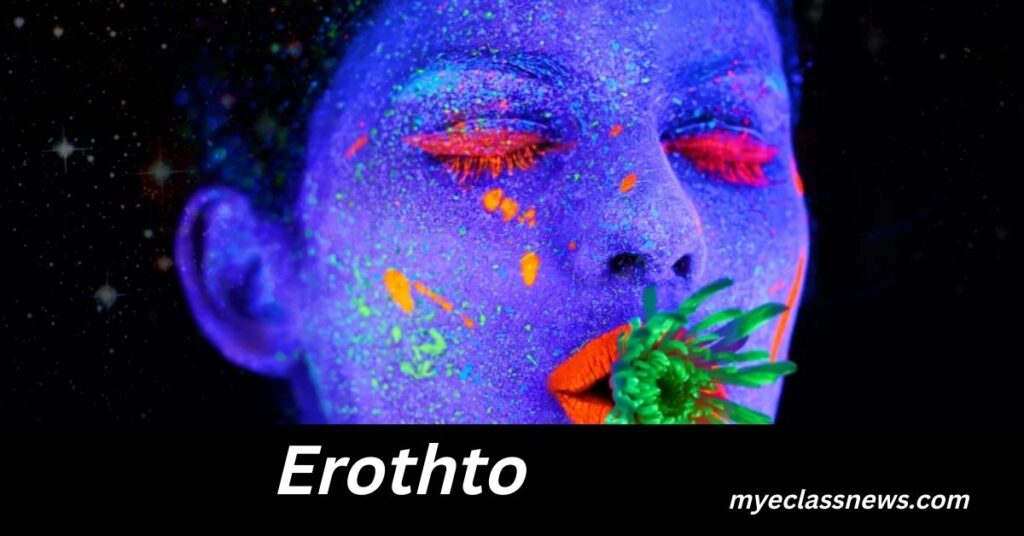Erothto: A Comprehensive Guide to Human Emotion, Desire, and Relationship Complexity

Human beings have always sought to understand the deeper forces that shape our emotions, desires, and connections with one another. Across cultures and throughout history, countless terms, philosophies, and studies have tried to capture this profound aspect of human life. One such concept is erothto, a term that encapsulates the delicate intersection of emotion, intimacy, and the often-complicated layers of relationships.
More than just attraction, erothto seeks to explain why people yearn, why we form bonds, and how vulnerability, trust, and communication shape the trajectory of our relationships. Related terms such as erothtos, erothts, and erotht enrich this discussion, offering different perspectives and cultural dimensions on how human desire interacts with emotional depth.
In this article, we will unpack the meaning of erothto in detail, explore its connection to human psychology, and examine its impact on modern society. By the end, you will not only understand the academic and philosophical relevance of erothto but also how it can help improve the way we navigate our personal relationships.
What is Erothto?
At its most basic definition, erothto represents the convergence of emotional intimacy and desire. Unlike terms that focus purely on physical attraction, erothto highlights the emotional, psychological, and even spiritual layers of human connection. It bridges the gap between fleeting desire and lasting emotional bonds.
The alias variations—erothtos, erothts, and erotht—can be seen as linguistic or philosophical nuances that capture different aspects of the same human truth: that our relationships are never simple, and that desire without emotional depth often leaves people unfulfilled.
While the concept may feel abstract, erothto plays a central role in daily life. Every romantic partnership, close friendship, or even fleeting connection is influenced by the balance of emotion and desire it represents.

Erothto and Its Connection to Desire
Desire is often portrayed as a physical impulse, but in reality, it is much more nuanced. Erothto expands this view by acknowledging that desire cannot be separated from emotion. When people feel attracted, it is not just a matter of physical beauty but also of psychological compatibility, shared vulnerability, and cultural expectations.
In this way, erothtos reflects the holistic nature of desire, suggesting that without emotional resonance, attraction remains shallow. This framework is especially relevant in modern relationships, where superficial connections (such as those formed online) can quickly fall apart if not supported by deeper emotional engagement.
Also Read: Markyystreams: A Complete Guide to the Future of Online Streaming
The Psychological Dimensions of Erothto
Attachment Theory and Erothto
From a psychological perspective, erothto aligns closely with attachment theory, which suggests that the ways we bond as adults are shaped by early childhood experiences. A secure attachment style fosters healthy intimacy, while anxious or avoidant styles can complicate relationships. Erothto recognizes these psychological undercurrents, showing how emotional needs influence desire.
Vulnerability as Strength
In erothto, vulnerability is not weakness but strength. Allowing oneself to be emotionally open creates the space for genuine intimacy. This is where erothts becomes important, as it emphasizes the courage required to be emotionally honest and transparent in relationships.
Desire and Identity
Erothto also touches on how desire is linked to identity. People’s desires often reflect their sense of self, cultural background, and even unspoken psychological needs. By understanding erothto, individuals can better align their desires with their authentic selves, rather than pursuing surface-level attractions that may not satisfy long-term needs.
Erothto in the Context of Relationships
Romantic Relationships
For romantic couples, erothto plays a central role in shaping emotional closeness. Desire without emotional connection can create relationships that feel unbalanced or short-lived. Conversely, emotional depth without desire can lead to bonds that feel more like friendship than romance. Erothto teaches us that a healthy relationship thrives when both elements are present.
Friendships and Non-Romantic Bonds
Erothto is not limited to romantic love. Friendships, too, are influenced by emotional depth and unspoken desires for connection, trust, and support. The alias erotht can be applied here, emphasizing the less obvious but equally profound bonds formed outside romance.
Family and Cultural Dynamics
In many cultures, family relationships also carry layers of erothto. The emotional bonds of loyalty, shared history, and unspoken expectations show how desire for belonging and connection extends beyond romantic intimacy.
Erothto in Modern Society
The modern world has transformed how people experience relationships. Dating apps, social media, and fast-paced lifestyles often encourage surface-level connections. Yet, despite these changes, the human need for deeper intimacy remains the same. Erothto challenges people to seek more than just instant gratification.
Also Read: bntamnh e: The Complete Guide to Cellular Protection and Wellness
The Role of Technology
Online dating can sometimes strip relationships down to appearances and quick judgments. Erothto reminds us that while attraction may begin physically, sustaining a bond requires emotional resonance.
Cultural Shifts in Relationships
Cultural norms around love and intimacy have shifted dramatically in recent decades. Today, individuals have greater freedom to define relationships on their own terms. Erothto provides a framework for navigating these choices thoughtfully, emphasizing emotional honesty and desire alignment.
Communication as the Foundation of Erothto
No relationship can thrive without communication, and erothto highlights this truth. Emotional intimacy is fostered when people are honest about their desires, needs, and fears. Miscommunication or avoidance, on the other hand, can erode the emotional depth that erothto depends on.
The alias erothtos particularly emphasizes the importance of dialogue in maintaining trust and intimacy. Partners who communicate openly are better equipped to navigate conflicts and sustain long-term fulfillment.
Erothto in Philosophy and Literature
Throughout history, philosophers and writers have explored the tension between desire and emotion. From Plato’s exploration of love in The Symposium to modern psychology texts, the essence of erothto has been discussed under different names. Literature often portrays characters who struggle to balance desire with emotional truth, offering timeless lessons about the importance of both.
This cultural lens highlights why erothto is more than just an abstract concept—it is a lived human experience that shapes art, literature, and collective identity.
Practical Applications of Erothto
Understanding erothto isn’t just theoretical—it has practical implications for daily life.
Also Read: Repmold: Exploring the Concept and Its Technological Impact
- For Couples – Practicing vulnerability and communication can deepen emotional intimacy and sustain long-term desire.
- For Individuals – Self-awareness of desires and emotional needs can guide healthier relationship choices.
- For Society – Recognizing erothto can help counter the shallow dynamics encouraged by technology and promote more authentic connections.
FAQs about Erothto
What does erothto mean?
Erothto is the integration of human emotion, desire, and relationship complexity. It explains how emotional depth and physical attraction combine to form authentic intimacy.
What are erothtos, erothts, and erotht?
They are variations of the term erothto, each offering nuanced perspectives. Erothtos often emphasizes communication, erothts vulnerability, and erotht non-romantic emotional bonds.
Can erothto exist without physical attraction?
Yes. While desire often includes physicality, erothto emphasizes emotional connection as equally vital. Friendships and family bonds also contain erothto.
How can I apply erothto in my relationship?
Focus on open communication, emotional honesty, and aligning desires with values. Building trust through vulnerability strengthens erothto.
Why is erothto important in the digital age?
With technology encouraging fast, superficial connections, erothto reminds us to prioritize emotional intimacy and meaningful desire.
Conclusion
Erothto is more than a word—it is a lens through which we can understand the deepest layers of human connection. By recognizing the interplay of desire, emotion, and vulnerability, we can improve the way we form and sustain relationships. The related terms erothtos, erothts, and erotht remind us of the diverse ways this concept manifests, enriching both romantic and non-romantic bonds.
In an era of rapid technological change and shifting cultural values, erothto offers timeless wisdom: intimacy is not built on desire alone but on the emotional and psychological truths that bind us together.




